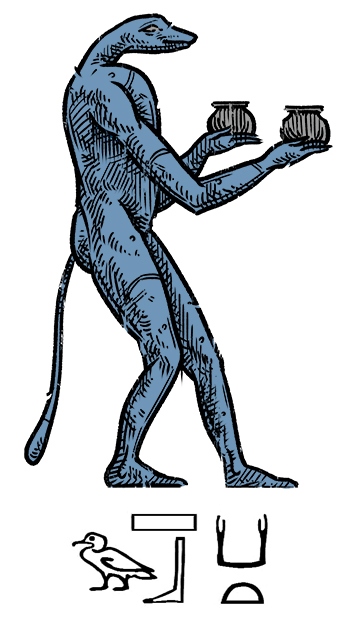Weshati Bekati
Weshati Bekati is the eighth decan of the main decanal stars of Egyptian astrology. The decan has its heliacal rise during the week of III Akhet 11-20 in the Egyptian calendar. Its name is translated as "the pregnant twins."
History
Weshati Bekati started as two separate decans (Weshati and Bekati) on the Middle Kingdom Period coffin lids. If each of the two stars represented an individual pregnant twin sister, it makes sense that they were later combined into a single decan.
The Twins of Atum are first mentioned in Pyramid Text Spell 215: “There is no god who has become a star who does not have a companion.” So companionship is to be found even among the decans, just as it is among the living. Lines 147-149 explain that the body of the deceased is reconstituted, reborn, through the Twins of Atum, starting with their eyes and ears, and finally all their body parts. The Twins of Atum tell the deceased, “Lift yourself up in your name as a god!”
Characteristics
In ritual work, according to the Naos of the Decades, Weshati Bekati “plots the time of life and serves as divider of time.” This is a direct reference to the decan as being connected with birth and life. This decan also enforces the commands of Thoth and is able to cast down those who disobey his orders.
The Dendera D zodiac ceiling depicts this decan as an anthropomorphic snake holding two nw-jars. The same ceiling gives its mineral as turquoise.
It is ruled over by Hapy and Duamutef, the sons of Horus.
| The Decans of Egyptian Astrology | ||
|---|---|---|
| Previous Decan | This Decan | Next Decan |
| Temat Kheret | Weshati Bekati | Ip-Djes |
